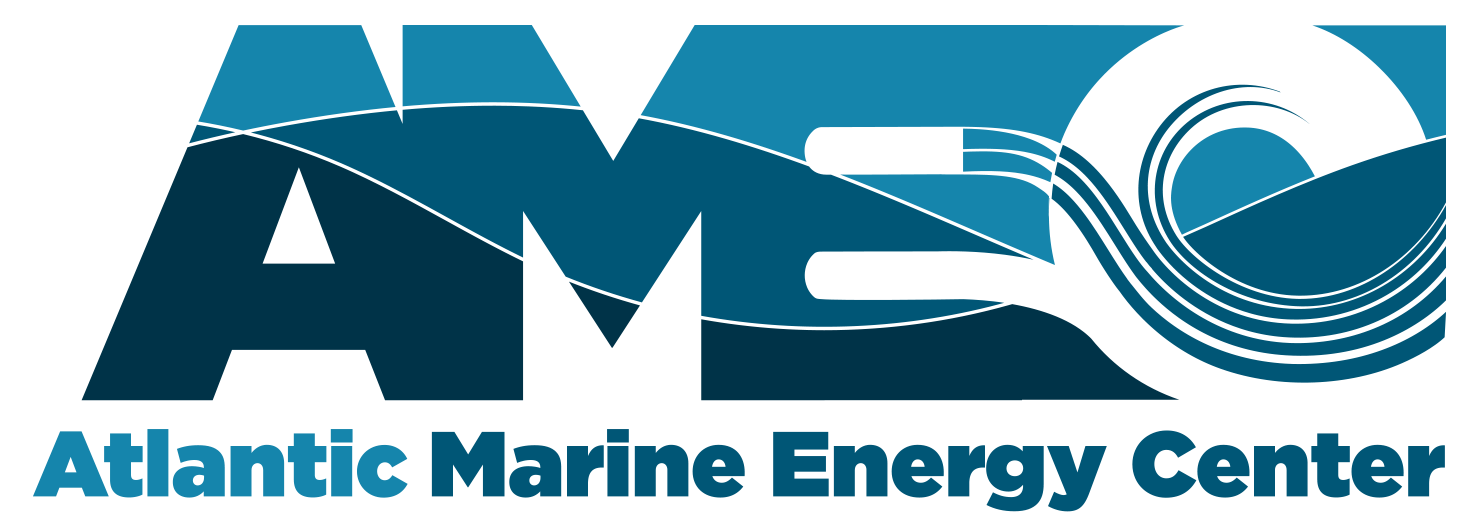AMEC’s Year in Review: Achievements, Partnerships, and Innovations in the Marine Energy Sector
It has been a busy year for AMEC, and as the year draws to a close, we want to share and highlight some of the exciting developments and achievements at AMEC in 2023.
We are proud that we successfully achieved and delivered over 90% of the milestones and deliverables for Budget Period 1, covering the period from August 2021 until September 2023. The dedication and hard work of our team, along with the support and collaboration of our partners, played a vital role in this success. We communicated our research findings in over 30 abstracts and presentations at various conferences. Additionally, we published, submitted, or prepared for submission more than 13 research articles. Some of our infrastructure upgrade tasks will carry over into Budget Period 2, mostly due to supply chain issues or NEPA holds.
One of our most significant milestones was the successful open-water deployment and testing of our wave-powered water pump at Isles of Shoals. This innovative technology harnesses the power of ocean waves to pump cooler, nutrient-rich deep water to the surface for open-ocean aquaculture applications such as kelp or fish farms. This technology can provide a new way to optimize aquaculture production using renewable wave energy.
At Stony Brook University, we enhanced the Virtual Flow Simulator (VFS) code to be applicable to a wide range of large-scale estuarine, riverine, and ocean environments under rigid and mobile bed conditions. We also incorporated modules for simulating a wide range of tidal and wave energy converters, as well as multi-device farms. These enhancements will help us better understand and optimize the performance of marine energy converters and systems.
In line with our objective to optimize marine energy designs, we implemented several infrastructure upgrades:
At Lehigh University, through the Advanced Technology for Large Scale Structural Systems (ATLSS) Laboratory, we developed a structural testbed for marine turbine blades, focusing on the blade-to-hub connection region where fatigue and ultimate strength failures often occur. We also designed and fabricated a specialized, small-scale test setup for soil-foundation interface testing when subjected to cyclic axial loading.
At the Coastal Studies Institute, we initiated Jennette's Pier energy hub installation and testing to provide a microgrid and intelligent power handling to accommodate an extensive array of marine energy devices.
At the University of New Hampshire, we completed the design and fabrication of a 1-m scale axial flow turbine (AFT) test bed for the UNH Towing Tank. The test bed is equipped with multi-axis load cells to measure rotor torque and thrust and blade root bending moments, which are important parameters to validate turbine designs.
Besides our technical accomplishments, we established several essential partnerships with leading organizations in the sector, including our AMEC Advisory Board members and industry partners from the Blue Economy. Last October, we hosted the University Marine Energy Research Community (UMERC) conference, attended by 170 researchers and students from the US marine energy sector, with 90 papers presented. The conference was a great success, allowing us to share our research, facilitate industry connections, host workshops, and provide technology transfer opportunities for AMEC.
Looking to the future, we aim to expand AMEC and its operations, particularly its education efforts. With anticipated new funding from WPTO, we plan to design and develop marine energy short courses that respond to industry needs and pave a solid pathway for AMEC students to enter the marine energy workforce. We are also excited to work on new research that will benefit communities in line with the Biden Administration's goals to achieve decarbonization while equitably distributing access to and affordability of the resulting renewable energy. We aim to provide opportunities for engagement with and involvement by people of diverse backgrounds, resulting in new blue economy applications and more resilient coastal communities. We look forward to working on new research on digital twinning on current and wave energy conversion, marine energy structures and moorings, marine energy systems, social sciences, and stakeholder engagement starting in 2024.
We are committed to delivering on our promises and achieving our goals, and we are grateful for the trust and confidence placed in us. As we move forward, we will continue to work towards advancing the marine energy sector and powering the blue economy.













